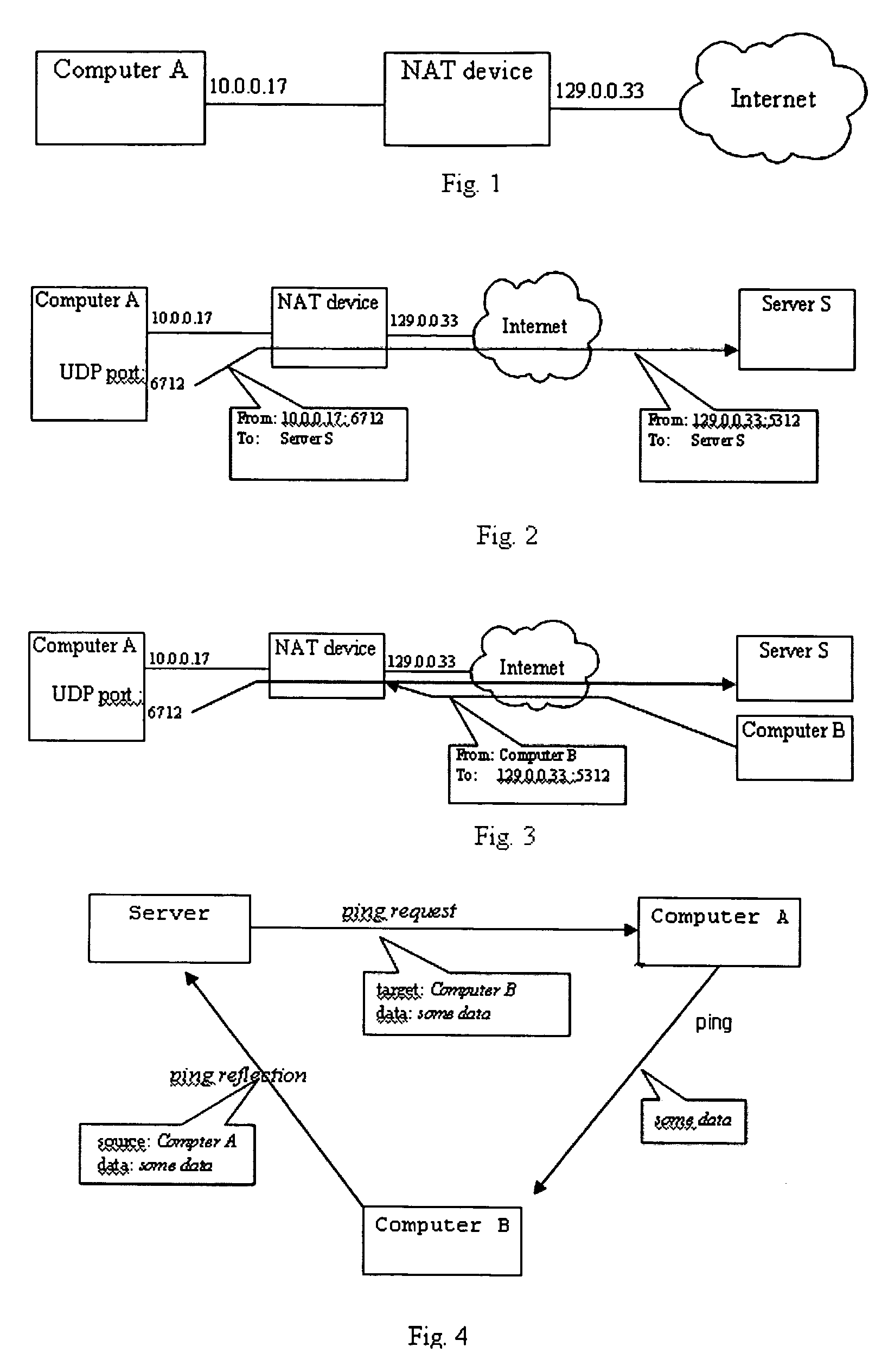Server-mediated setup and maintenance of peer-to-peer client computer communications
- Summary
- Abstract
- Description
- Claims
- Application Information
AI Technical Summary
Benefits of technology
Problems solved by technology
Method used
Image
Examples
Embodiment Construction
[0038]The system and method according to the invention is a virtual private networking system that uses traditional VPNs, assisted NAT traversal (namely, UDP hole punching), proxy traversal (also known as HTTP and SSL tunneling), and / or relays.
[0039]One aspect of the method and system includes a modification of the existing UDP hole punching technique that significantly improves it effectiveness; the combination of the above technique with UDP and TCP relaying techniques to provide connectivity between most computers with Internet access; the client presence tracking framework for a server, client computers and relays; and the combination of above with virtual private networking providing for zero-configuration virtual private networking.
[0040]As seen in FIG. 1, client computer A is using NAT device N to access the Internet. Client computers are conventional computers having a processor, read only and random access memory, input means and output means. In this application, the term ...
PUM
 Login to View More
Login to View More Abstract
Description
Claims
Application Information
 Login to View More
Login to View More - R&D
- Intellectual Property
- Life Sciences
- Materials
- Tech Scout
- Unparalleled Data Quality
- Higher Quality Content
- 60% Fewer Hallucinations
Browse by: Latest US Patents, China's latest patents, Technical Efficacy Thesaurus, Application Domain, Technology Topic, Popular Technical Reports.
© 2025 PatSnap. All rights reserved.Legal|Privacy policy|Modern Slavery Act Transparency Statement|Sitemap|About US| Contact US: help@patsnap.com


